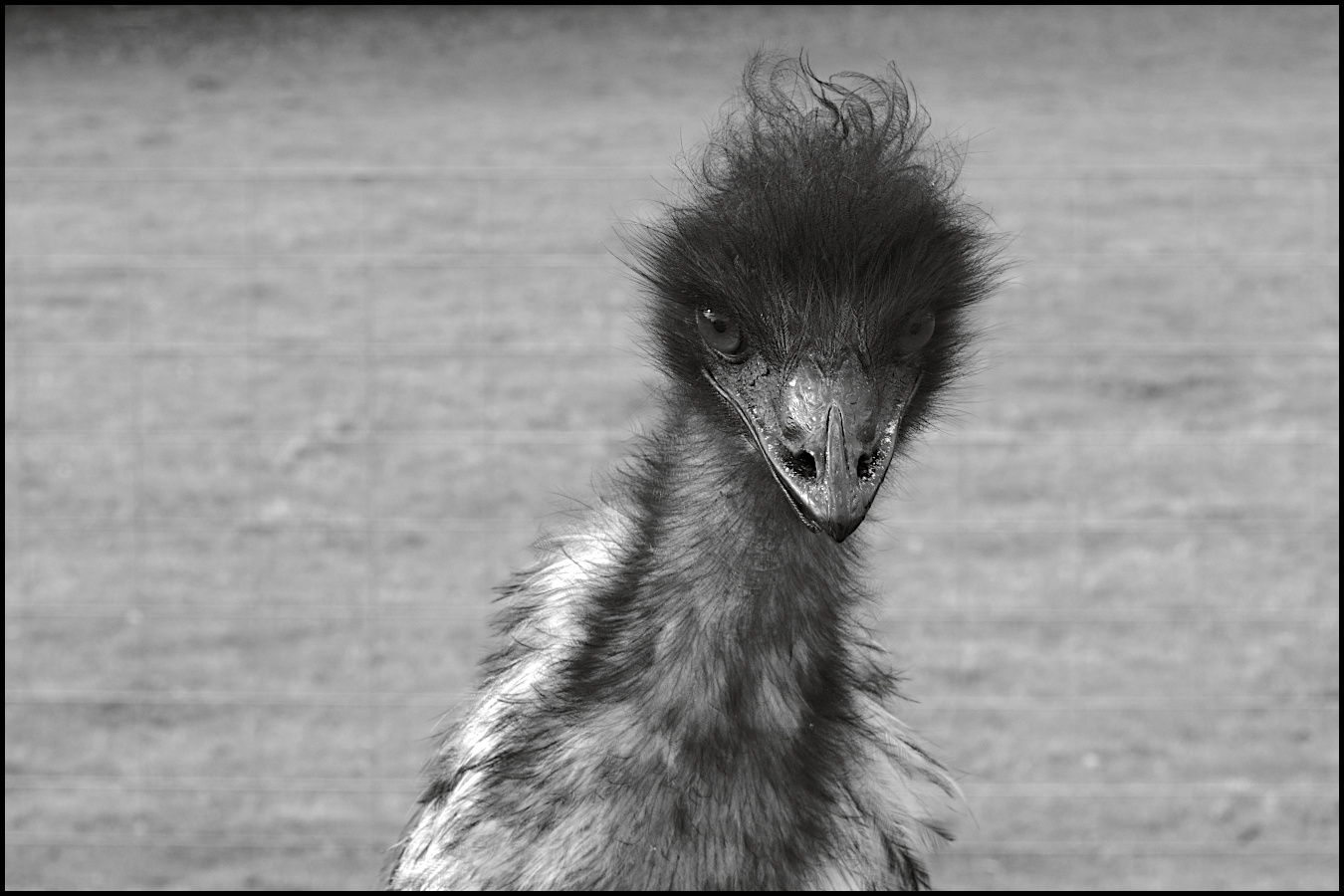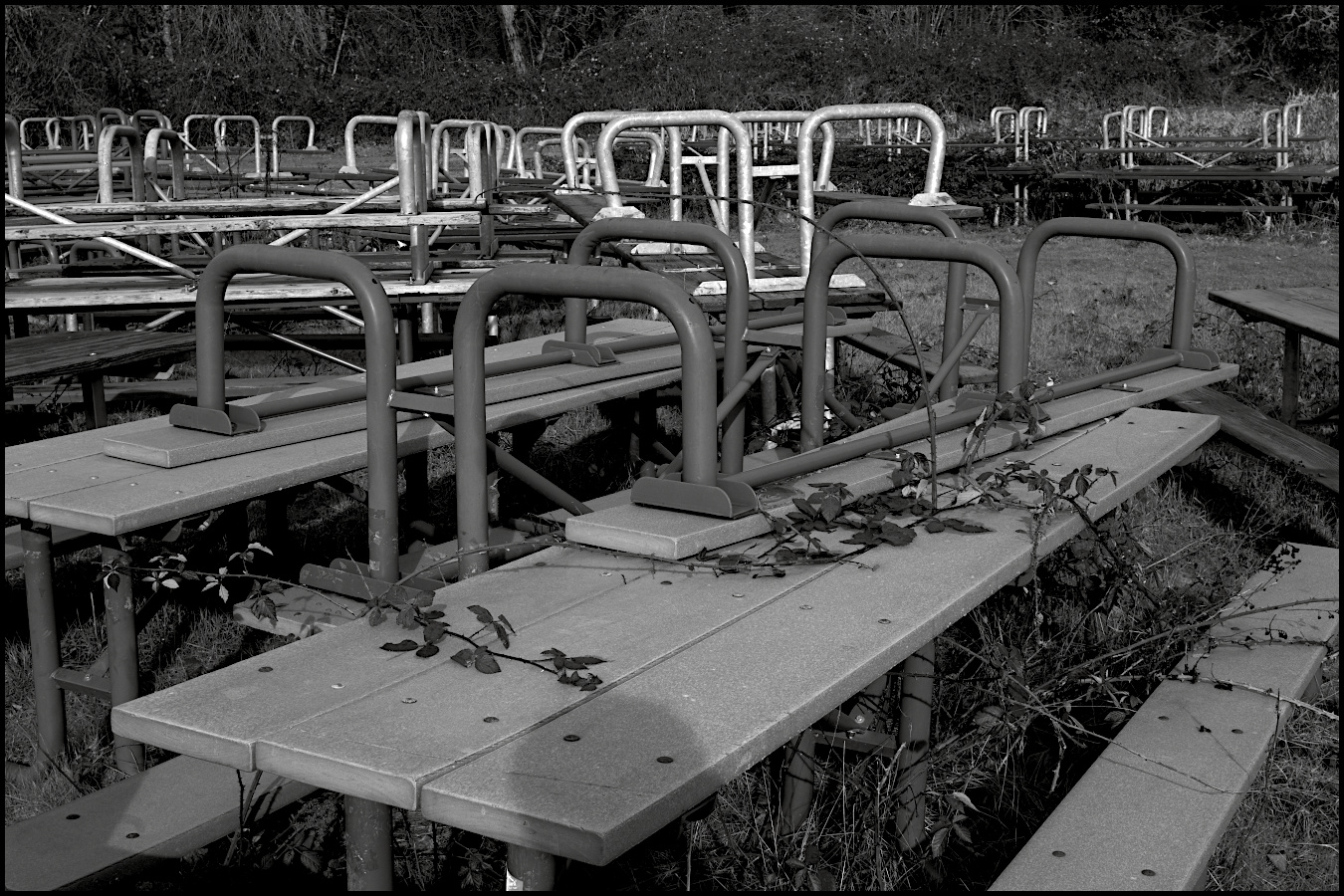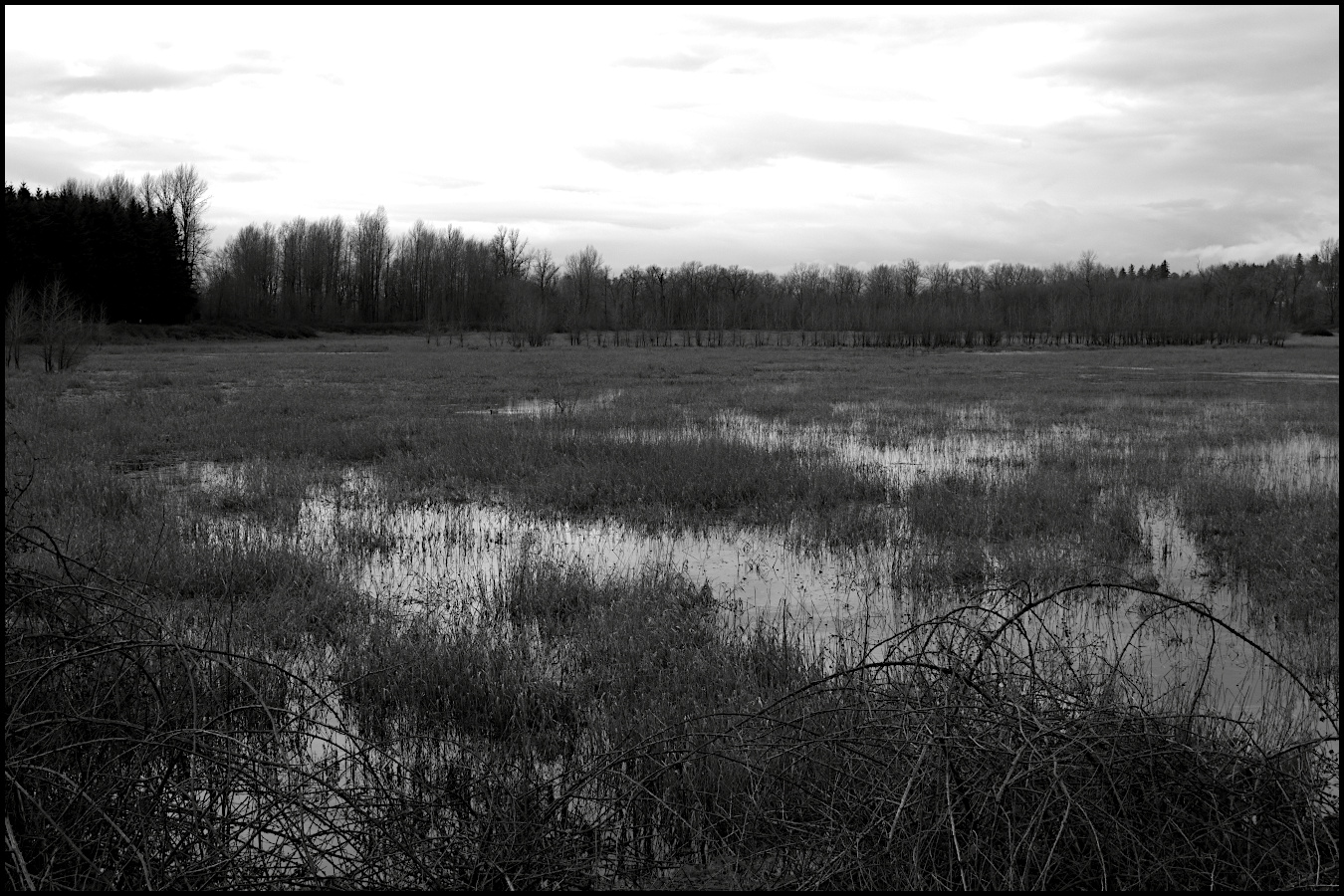Freakscene
Obscure member
Yes, I have noticed that. I'm asking because I am curious if the ZK lenses behave similarly. At least when harvesting the PK mount lenses from my lens swamp the non-Pentax brand PK-A lenses have been, shall we say, variable at best, in their interactions with the Monochrome. I have one PK-A mount third party lens that made the camera lock up, and which I thought had killed the camera, through to an unbranded custom M42 adapter with a contact which makes the camera work perfectly, including activating highlight weighted metering, although it does make the camera think all the lenses adapted using it are 50mm focal length, and stop-down metering is required as you would expect.Pentax-A series lenses, the first manual focus ones with electronic coupling to the camera, work with highlight-weighted metering.
Freakscene
Obscure member
Another 35mm-e option is the Pentax HD DA 20-40mm f/2.8-4 ED (their lenses have the worst designations - no affiliation to B&H either, just a good place to show the lens). I borrowed one and like most zooms it is better at the wide end than the long end, although the zoom range is limited to say the least. But I can do 99% of my photography with a 30-60mm-e lens, and I'll be getting one soon.
vitaly66
slightly tilted
Shab
Well-known
Thank you so much...You are hitting on probably my biggest problem with the camera. I'm not even complaining about Pentax specifically here; every system which has APS-C cameras that share a lens mount with full frame cameras frustrate me, because APS-C is a really awkward crop for full frame lenses. If you like telephoto, especially short telephoto, great. And I actually really like the 70-75mm range. But it's simply not versatile enough to stick a full frame 50mm on APS-C and call it a day. I did that for years with my Nikon D40 when I could only afford one Nikkor 50mm prime. It's a sometimes awesome combination but also often frustrating and impossible for close quarters with people.
Now, Pentax does have some really nice APS-C lenses, especially the DA Limited line. Most of them aren't as large maximum aperture as you mentioned, so if you really must have the shallow DoF all the time, then they're not great replacements. But if you stop down at all, then they're equivalent lenses, plus you can shoot crazy high ISO on the Monochrome no problem. The 15mm and 21mm DA Limited lenses, and then the cheap 35mm 2.4 would be a nice kit.
But back to my problem: I have a K-1 II, and I love it. But I'm forced to think of these two Pentaxes as two different formats. The only lens I own which is actually versatile on both is the FA 31mm Limited, which is a great lens, but it's expensive and according to my calculations, it would have to be sold in the short term to keep the Monochrome, which defeats the purpose. The other lenses I enjoy on the K-1, the 35-105mm 3.5, 35-70 3.5-4.5, couple of 50 1.7 versions and 50 1.4 are not useful everyday lenses for the APS-C. That's really frustrating. I owned the FA 35mm f2 for a while, but it's not really sharp enough optics to function as a good nifty fifty equivalent on the APS-C.
If I sacrificed other gear to keep the Monochrome I wouldn't be able to afford the 15mm and 21mm DA lenses just for the Monochrome. I could get the 35mm 2.4 but then I'm putting a very budget lens on a high-end body for a while.
Oh yeah, if you want to consider the Monochrome with a standard equivalent fast lens, the FA 31mm Limited is your best bet for really nice optics, the older SMC version isn't horrible.
Shab
Well-known
Thank you so much also...@Shab - I am the least qualified person to answer your questions about other options, especially when it comes to digital photography.
For one thing, my tastes and preferences in camera stuff leans toward the eccentric anyway. As an example, I have eleven(!) 2x3 Graflex cameras in the cupboard. Each one is fitted with its own different and unique lens -- Rodenstock, Zeiss, Schneider, Kodak Ektar, Voigtlander -- and on each one I've painstakingly calibrated its Kalart rangefinder to match. (The word "eccentric" here is a charitable way of saying "mental illness" ;>)
Other quirks include preferring Rolleiflex to Hasselblad, Tessar to Planar, boxers to briefs...
Anyway, as for the DA21mm/3.2 "Limited", I do think it's pretty fine. In fact this was the first digital-era lens I ever bought (used like new, a little over $100) just a few months ago, for an old Pentax K-01 camera -- their short-lived entry into the "mirrorless" market. The image quality from this lens/camera combo is what convinced me that Pentax gear was well worthwhile.
To give you a better idea, here's a large sampling of DA21mm/3.2 images from flickr user "pepperberryfarm", in a variety of contexts, most color, some b&w (desaturated), many wide open:

I might have stopped (hah!) with the 21mm, as it is so very good and versatile. Instead I added the 15mm, 35mm, and 70mm... I bought all of these used like new as well. As with the Monochrome camera itself when one came up, a very lucky occasion! So that is one way to save a substantial amount of money over the prices you have quoted.
This set of lenses is fun, wonderfully compact, discreet, easy to travel, and delightful in every way. My own "wish list" for another prime lens would be a 27mm/2.0 -- giving about a 40mm equivalent -- in a similarly compact "Limited" lens build quality. Such a prime does not exist from Pentax. (I did recently pick up a Zeiss 25mm/2.8 Distagon in Pentax mount, more to come on that in the future. For now I will just say it is the least compact and most indiscreet lens I own, yikes it is a hefty chunk!)
In the end, if one is happy with the results of an existing camera/lens system, such as your Fuji -- there isn't much of a case to change from what you already have. I happen to love the Monochrome -- for its sensor, the optical finder, build quality, and the fine Pentax lenses old and new. And yet, it's all just sort of a happy quirky fate that this is what I ended up with ;>
Shab
Well-known
Thank you so much also... really good info, about the M246... I didn't know it.I think there are numerous advantages to a monochrome sensor camera for working in black-and-white. Your conversions are very good @Shab but I think there is tonality and texture you can get from a B&W sensor that isn't there for me in most converted files (note I say most). The usual rubbish in / rubbish out rule applies. Not every photo taken with a B&W sensor is a masterpiece because that's how it was made.
I am biased against the typ 246, I admit, but I wouldn’t buy one. The 12 bit files have banding problems when you lift the shadows and even in daylight, tonal separation and rendition of texture can be odd. When it works well the files can be as close to perfect as anything you’ll get from that format, but it was too unpredictable for me. Live view, one of the handiest things for using fast lenses on these cameras, is basically useless, and with shallow depth of field I lost a lot of photos because they weren't in focus. Monochrome digital files also lose a lot of tonality in out of focus areas that doesn't happen as much with film, so out of focus photos aren't just 'blurry' and thus 'ok', at least to me.
The Pentax has some colour background associated frustrations, the worst of which is the white (!!!???) highlighting of in-focus areas for focus peaking, but the camera is essentially the end of a long line of evolution of dSLRs but with a monochrom(e) sensor. The 21/3.2 is essentially equivalent to your 35mm, particularly to a fast 35mm used with film, because the Pentax Monochrome at ISO100,000 looks about the same as ISO400 film pushed to 800. Unless you rely on your fast 35 on film for shallow depth of field a lot, there is not much difference.
I bought the HD Pentax lenses in 15, 21, 35 and 70mm for my Pentax KiMono and they are all quite excellent, despite some having an mtf that would make a Leica user laugh. The photos look good to me. No-one noticed the KiMono photos among the Leica M10M and M11M photos in my Rajasthan series, and I know which is which mainly from the angles of view. I would encourage you to get autofocus lenses if you get a KiMono because some of the best features, highlight weighted metering especially, only works with autofocus lenses. This one https://www.bhphotovideo.com/c/product/743117-USA/Pentax_21987_35mm_DA_L_F2_4.html is very cheap and perfectly ok, although the 35mm macro is better (that one is a really amazing lens).
Coming from film, one thing I can’t stress enough is that digital frees you to go crazy. Not sure how a photo will look or if it will or won't work? Press the button and find out . . . if you shoot the equivalent of a roll in 2 minutes, so what? It costs nothing. The camera, the lenses, everything, will pay for themselves, and if/when you wear it out, you can buy another one with the money you save from not buying film, chemicals or processing, and the time you would have spent developing and scanning.
The ZK Distagon is very nice - I have a C-Y version of the lens and it is great, although in the film days it was, for some reason, regarded as mediocre. I am interested to know if the electronic contact in the ZK lens means that the highlight weighted metering works? And the Distagon is big(ish) but it is much, much, MUCH more compact than the Sigma Art 35/1.4, which is basically the only really fast, modern normal lens for this camera (the 31/1.8 Limited is nice but f1.8 is not fast to me).
You can't have everything.
Marty
I think I would really happy with a X-T3 Monochrom(e)... I will wait a time, I don't have any need of buying a new camera/system... and thank you (@agentlossing , @vitaly66 and @Freakscene) so much for your time and thoughts.
Freakscene
Obscure member
Your self control and moderation impress me. Your photos are great, so please keep posting them.Thank you so much also... really good info, about the M246... I didn't know it.
I think I would really happy with a X-T3 Monochrom(e)... I will wait a time, I don't have any need of buying a new camera/system... and thank you (@agentlossing , @vitaly66 and @Freakscene) so much for your time and thoughts.
JohnWolf
Well-known
@Shab. Your Fuji conversions are among my favorites here on RFF. They often look like film to me, something I rarely see from monochrome cameras. (I had the first two Leicas.)Thank you so much also... really good info, about the M246... I didn't know it.
I think I would really happy with a X-T3 Monochrom(e)... I will wait a time, I don't have any need of buying a new camera/system... and thank you (@agentlossing , @vitaly66 and @Freakscene) so much for your time and thoughts.
It also seems to me that most monochrome camera users weight their processing toward the darker tones. Not sure why that is. I know you have a preference for higher key processing, which Fuji conversions render so well.
No real conclusion here; just sharing some observations. I would also love to see what Fuji could do with a monochrome sensor.
John
agentlossing
Well-known
Likely because the images have to start out underexposed to protect the highlights, it's easier to make the final image closer to the dark tones. I like Shab's more high-key look as well.It also seems to me that most monochrome camera users weight their processing toward the darker tones. Not sure why that is. I know you have a preference for higher key processing, which Fuji conversions render so well.
Freakscene
Obscure member
@Shab. Your Fuji conversions are among my favorites here on RFF. They often look like film to me, something I rarely see from monochrome cameras. (I had the first two Leicas.)
It also seems to me that most monochrome camera users weight their processing toward the darker tones. Not sure why that is.
Less fighting with the output. My photos were, in general, lighter when I used film, particularly when Plus-X was still available. Plus-X at EI64-100, yellow filter, Xtol and the last of my Forte, Luminos/Fotospeed and Cachet papers in Selectol (not Selectol Soft) were gorgeous. In general, with B&W film you expose more to obtain shadow detail and contrast, and the highlights go where they go, managed largely by good control of film development.
As @agentlossing points out, generally with digital we expose less to avoid blowing out highlights, doubly so for monochrome files because of the lack of headroom. I could raise the darker tones of my Monochrom photos more, but until I got the M10M that generally showed some artefacts in the shadows, especially with the 246. So high key is more work. In colour conversions you’re often relying on data from only one colour channel.
I know you have a preference for higher key processing, which Fuji conversions render so well.
It’s easy enough to do with monochrome files; SilverEfex has some pre-sets that are good starting points. I generally prefer not to mess with my files too much and as much as I wish I had copious spare time, any time spent on my own photos could be spent with my family, working, doing housework or generally addressing other currently pressing needs. One day, hopefully, life will be less busy.
No real conclusion here; just sharing some observations. I would also love to see what Fuji could do with a monochrome sensor.
They are perceptive observations. I wish every manufacturer would make monochrome cameras, but really, we’re lucky to have the ones we’ve got.
Marty
shawn
Mentor
*Dream world* Fuji dusts off their SuperCCD and or EXR-CMOS sensor designs, updates them to higher resolution and makes it monochrome. Camera meters based on the higher sensitivity pixel sites and uses the lower ones to give highlight headroom of film.No real conclusion here; just sharing some observations. I would also love to see what Fuji could do with a monochrome sensor.
John
Freakscene
Obscure member
A mono version of the Fuji designs, or any sensor with a mix of high and lower sensitivity sites would be incredible. If you could get another 5-8 stops of highlight data then your high key shots would pose no difficulty whatsoever, and it would be really simple to get very gentle highlight rolloff, which is what mostly bothers me about blown out areas in digital photos - the actual white doesn’t bother me, it’s the quality of the transition from pale to white.*Dream world* Fuji dusts off their SuperCCD and or EXR-CMOS sensor designs, updates them to higher resolution and makes it monochrome. Camera meters based on the higher sensitivity pixel sites and uses the lower ones to give highlight headroom of film.
Marty
vitaly66
slightly tilted
trix4ever
Well-known
This!A mono version of the Fuji designs, or any sensor with a mix of high and lower sensitivity sites would be incredible. If you could get another 5-8 stops of highlight data then your high key shots would pose no difficulty whatsoever, and it would be really simple to get very gentle highlight rolloff, which is what mostly bothers me about blown out areas in digital photos - the actual white doesn’t bother me, it’s the quality of the transition from pale to white.
Marty
I agree with every word. A modernised Super ccd sensor or similar is the only thing that would make me go 100% digital.
vitaly66
slightly tilted
agentlossing
Well-known
What kind of sensor is this?or any sensor with a mix of high and lower sensitivity sites would be incredible.
shawn
Mentor
older Fuji sensors SuperCCD and CMOS EXR.
vitaly66
slightly tilted
shawn
Mentor
The other sensor that can do something similar (for monochrome) is the Foveon. First level is basically full spectrum and can be used for monochrome with the second and third layers to recover highlights. The other layers are reduced in signal by the design itself. Iridient Developer took advantage of this for Foveon Merrills with their Sigma XDR Monochrome processing mode.This!
I agree with every word. A modernised Super ccd sensor or similar is the only thing that would make me go 100% digital.
Hopefully Sigma is able to release their FF Foveon camera at some point.
vitaly66
slightly tilted
Share:
-
This site uses cookies to help personalise content, tailor your experience and to keep you logged in if you register.
By continuing to use this site, you are consenting to our use of cookies.






